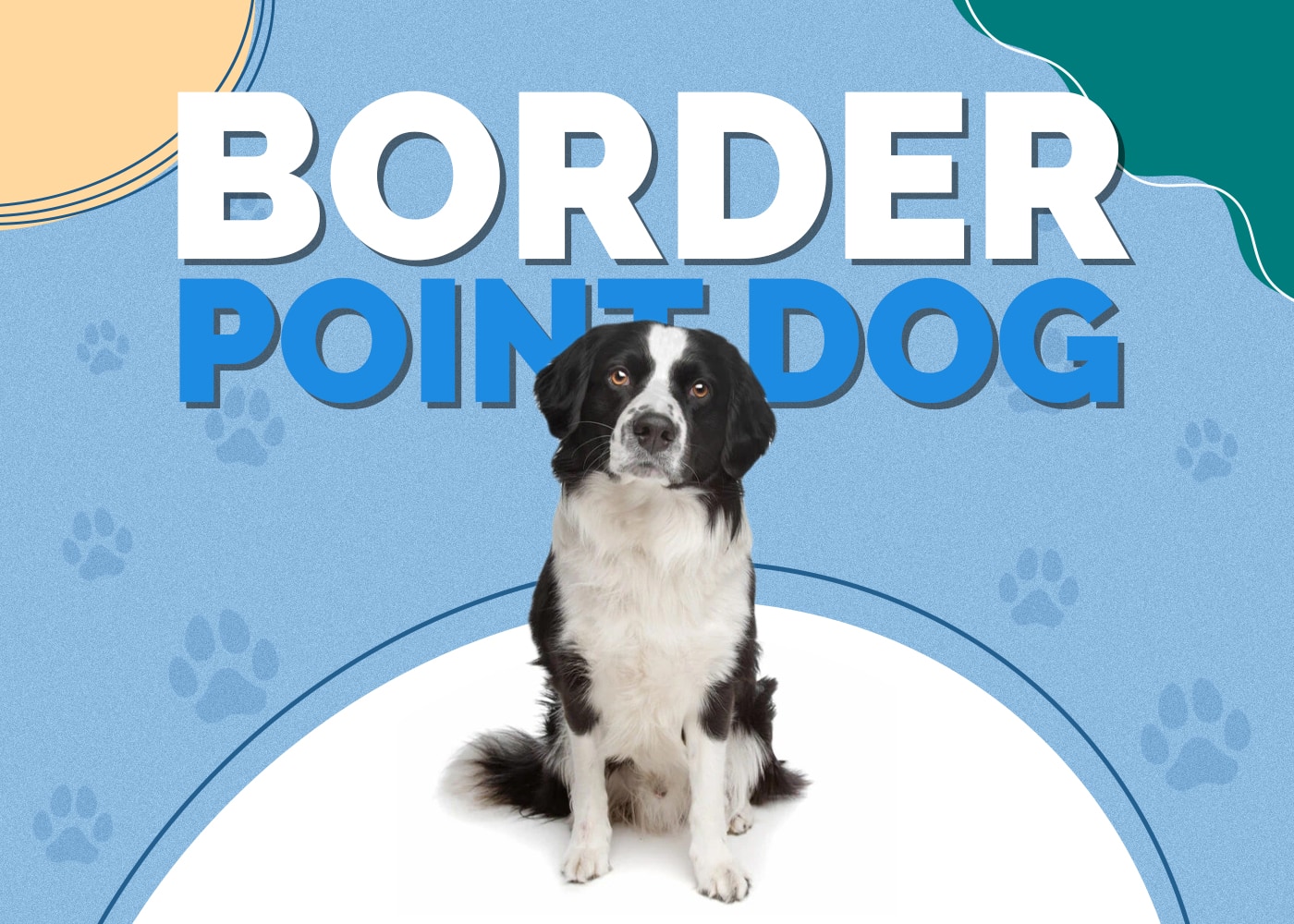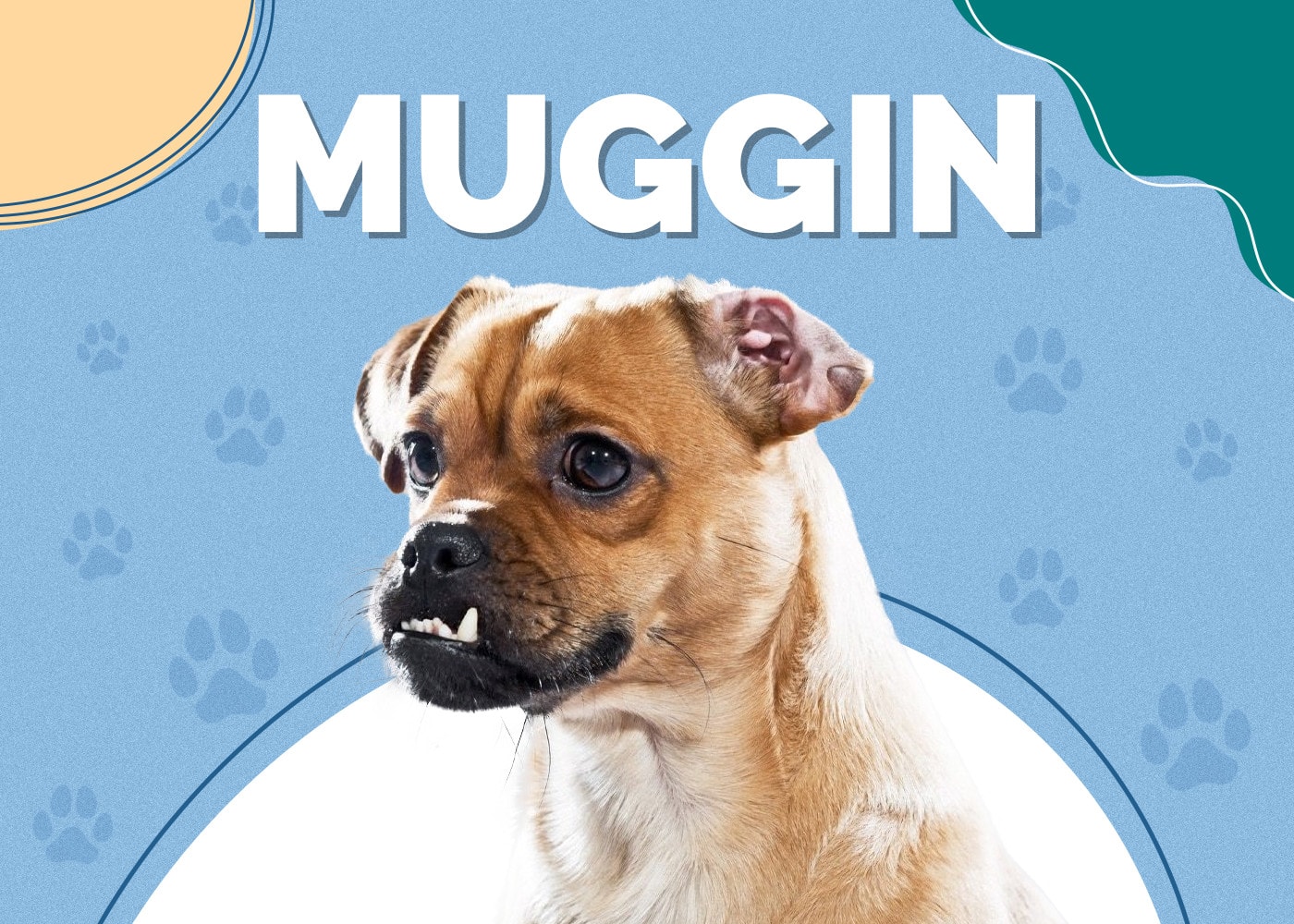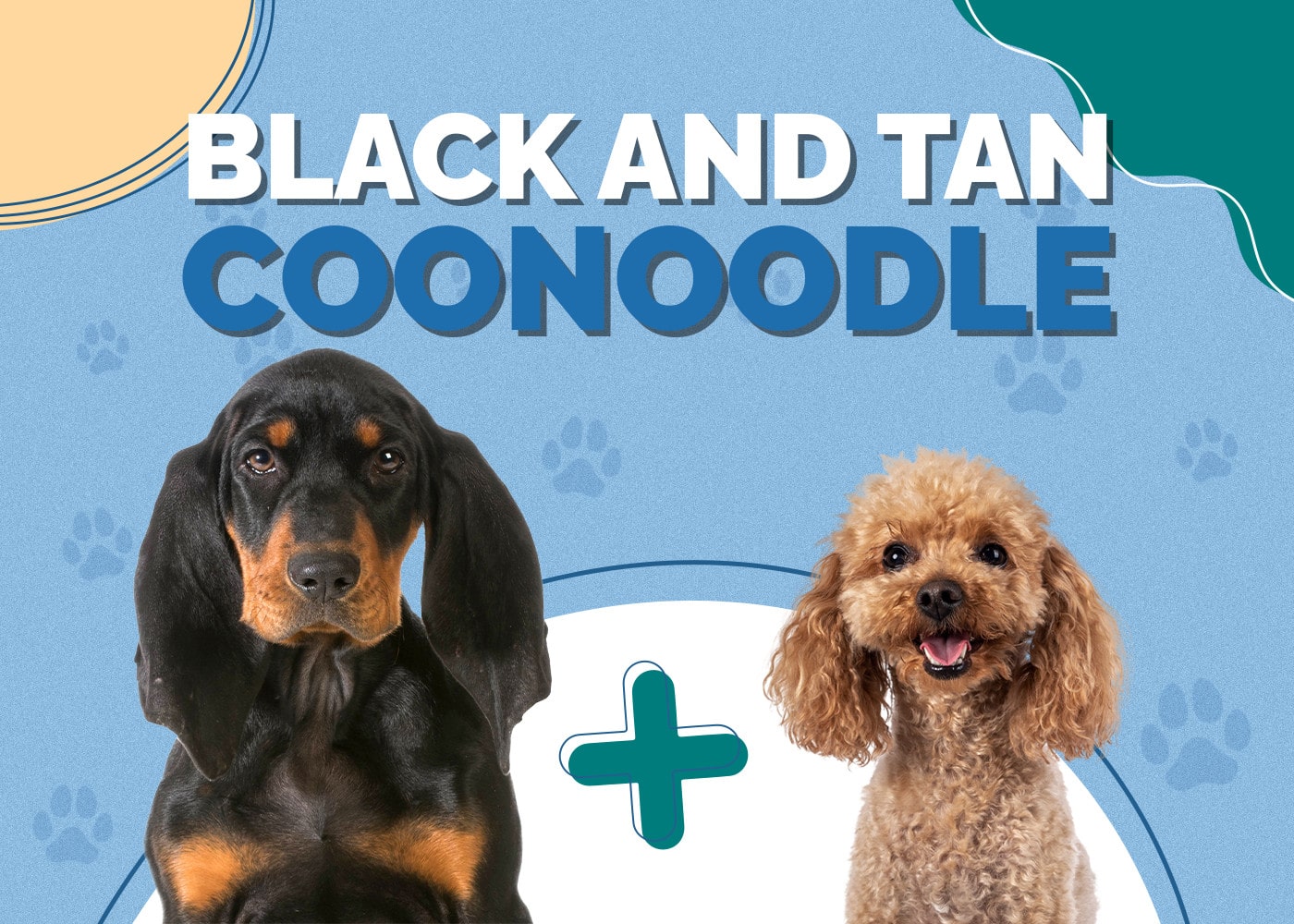Huskita (Siberian Husky & Akita Mix): Info, Pictures, Characteristics & Facts

Updated on
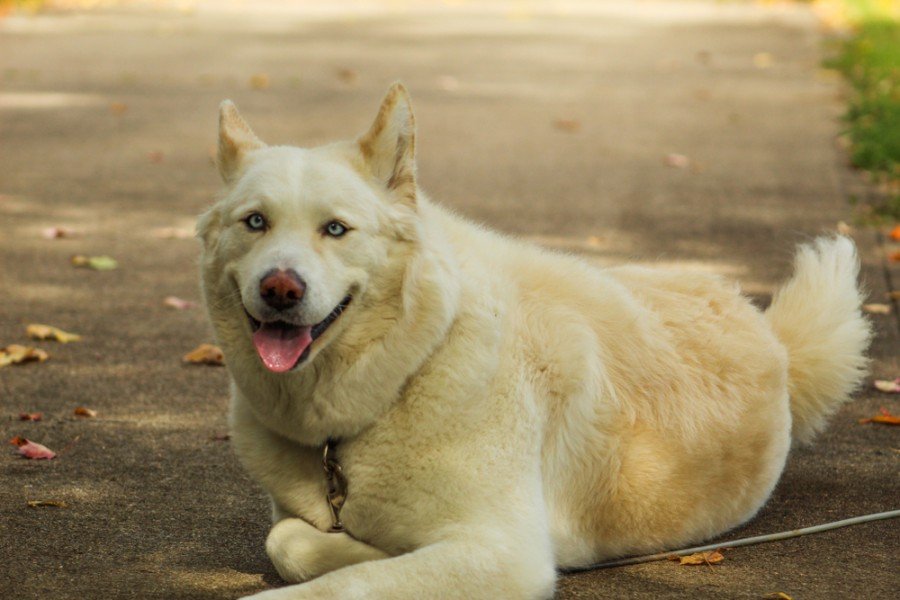
Height:
22-25 inches
Weight:
50-75 pounds
Lifespan:
10-13 years
Colors:
White, black, cream, tan
Suitable for:
Active families with grown children, those with large yards, those able to give them jobs and tasks to complete
Temperament:
Energetic, loyal, happy, protective, alert, affectionate, stubborn
If you are looking for an energetic and loyal pet, the Huskita may be a great adoption option for you. This is a designer breed that is a mix of a Siberian Husky and Akita. They are very intelligent, protective, and affectionate to their owners. Not only that but they make great therapy and companion dogs and have done a lot of police and guard dog jobs.
If you are after a dog that will hike, run, and play, you have found the right article. We will go over all of the info you need about their temperament, care, and training. It is important to know all of the details about a particular breed you were thinking about adopting before finalizing your decision.
Pet parenting is a large undertaking, and you will be responsible for this animal for their 10 to 13 years of life. Ensuring that you are financially and personally ready for a fuzzy ankle biter is essential to yours and their happiness.
Huskita Puppies

One of the hardest parts of designer hybrid breeds is there is little documentation about their origins. The best information comes from their parents along with opinions and info from other Huskita owners. In this case, this Akita Husky mix originated in the United States in the 1990s, or so it is thought.
Both parents are working dogs. The Siberian Husky is used in Alaska as a sled dog, while the Akita originates from Japan and is in the protective field. As a puppy, the Huskita is full of energy, alertness, and playful antics. They can be clumsy and uncoordinated until they grow into their paws, and they will make you laugh with their straightforward manner.
3 Little-Known Facts About the Huskita
1. Pet Dander Bandits
Unfortunately, the Huskita is not recommended for anyone with allergies or other breathing difficulties due to their pet dander. This breed has a higher-than-average shedding, which can cause serious stuffy noses, cough, and other issues.
2. Backyard Barkers
Although this dog loves to be in the great outdoors, they are not a good candidate for being left in the yard all day. Not only do they have a decent prey drive, but they do not do well with extended periods alone.
3. Protective Pooches
The Huskita comes from a long line of protective pooches. Their Akita ancestors protected Japanese royalty for decades.
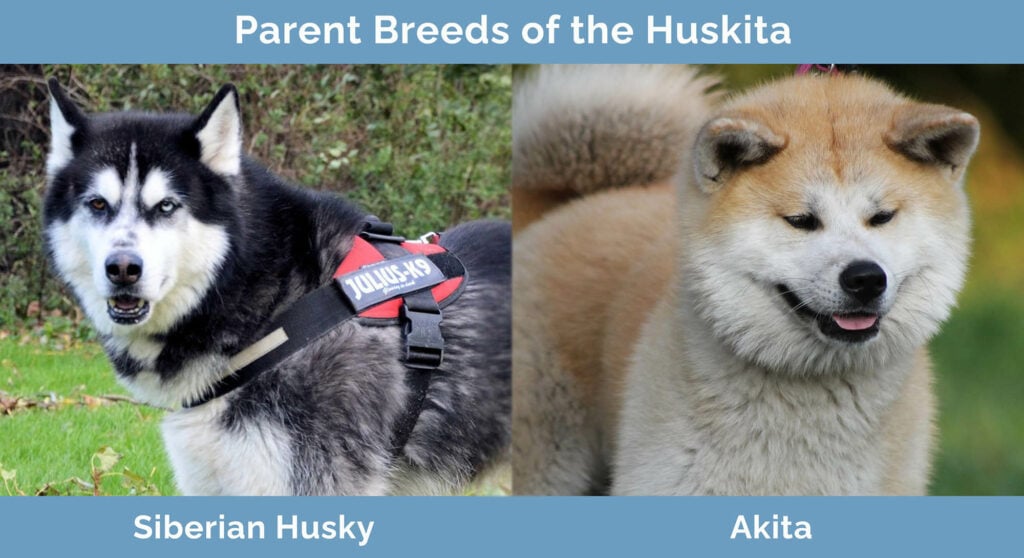
Temperament & Intelligence of the Huskita 🧠
The Huskita is a very loyal and protective dog. They are very alert and make good guard dogs and thrive in police work and other companion jobs. They are very loyal to their family, can be affectionate, and are very intelligent. They have been used as therapy dogs, companions, search and rescue dogs, and of course, for working tasks.
This pup does not like to be left alone for long periods, yet with the proper amount of exercise and attention, they can amuse themselves and do not need consistent attention. This breed loves to be around the family, and although they are more laid-back with a somewhat independent nature, they still enjoy a good cuddle. They do best in homes with a large fenced-in yard, although you should know that they can be prone to barking. Not only that but they also are not fans of a lot of changes at once.
Due to their thick coat and ancestors, this is a pup that does better in colder climates. They are great for snowy days as their Siberian Husky parents originate from Russia, and more recently, Alaska. What’s more, this particular breed has a decent prey drive that will cause them to follow their nose into some sticky situations.
Are These Dogs Good for Families? 🏡
The Huskita makes a great family dog in situations where there are older children. This is not a breed that is recommended for novice owners or homes with small children. Although they are not particularly aggressive, they do have the prey drive we mentioned above. This can get the better of them when around smaller people such as children. Not only that, but they can snap if they are mistreated. Unfortunately, this can happen as an accident when children play too rough.
Other than that, the Huskita will make a great family companion. They are very loyal, and protective, and will go out of their way to make sure that the family is safe. They enjoy being around people, especially when they are involved with jobs or tasks that will please their owners.
This breed will also be wary of strangers. As they have a very protective nature and their ancestors have worked in many guard dog positions, strangers will get an earful when they arrive. Once they realize there is no threat, they will warm up, but they are typically loyal to their family or individual owner.
Does This Breed Get Along With Other Pets? 🐶 😽
This breed is typically better when they are the only pets in the home. As we mentioned, the Huskita has a high prey drive that can cause them to chase smaller pets such as cats. They can be a bit jealous of your time and protective over their territory.
That being said, if you socialize with this breed early, it is possible to have them with other animals. The best option is to have them as a puppy when the other pet is already in your residence. Getting them used to other animals, smells, sounds, and sights is imperative for their overall obedience.

Things to Know When Owning a Huskita
Learning about your potential pet’s temperament and adorable puppy years is only half the battle when deciding on the right dog breed for you and your family. There are many other aspects of pet care that you need to consider before you make the final decision.
Food & Diet Requirements 🦴
The Huskita is an energized dog. This means that they will require a diet that is meant for a highly active pup. This typically translates to meals with high levels of lean protein, such as beef, chicken, turkey, and other recipes. They do well with healthy grains, fruits, and vegetables that will provide other vitamins and minerals that support their overall well-being.
Things you want to stay away from are unhealthy foods and treats that are high in sugar and an overload of table scraps. There are many nutritious pet food products available. What’s more, as the Huskita is not known for having a lot of food sensitivities, you will be able to choose which recipes tempt their palette the best.
Besides the recipe, you should also think about the formula that you wish to give to your pup. Typically, you have the option of dry food, freeze-dried raw, canned, or home-cooked. Although home-cooked meals can be the best, it is understandable that most people do not have the time to do this regularly. For the most part, freeze-dried raw or dry food is usually the most nutritious with the most nutritional benefit for your canine.
When looking at different brands, some things to keep your eye out for are healthy fibers, probiotics, antioxidants, omega fatty acids, glucosamine, and other vitamins and minerals that will support their overall lifestyle. It is also important to discuss your Huskita’s diet with your vet to ensure that they are getting the proper nutrition for their health, age, and lifestyle.
Exercise 🐕
We are sure you have surmised already that the Huskita is a very active and energetic dog. They require high levels of exercise daily to ensure their overall well-being. In general, they do well with at least two 90-minute walks, jogs, or hikes per day, plus some outdoor activities whether in the backyard or a dog park.
As this dog comes from a long line of working breeds, they also do well with activities where they are set to certain tasks. Whether this is a simple game of fetch, agility courses, or other jobs, this will benefit their overall energy levels and mental well-being.
We also mentioned above that as long as this breed is getting the proper exercise, they can be left to their own devices for a moderate amount of time. If they have excess energy, it can cause them to become bored and destructive. You will find that they will bark, howl, and dig to relieve the stress.
Other Activity and Considerations
Additionally, the ideal living situation for this pup is to live in a home with a fenced-in backyard. Be advised that due to their prey drive, it is important that the fence is well secured, and they should be monitored, as some of these pups are skilled at the great escape.
You may also want you to provide your pet with mentally stimulating toys. This can be in the form of puzzles or other activities that will keep their mind engaged for 15 to 20 minutes per day. They also can be taught tricks and other games that the whole family can join in on. Finally, this breed is better suited for colder climates. That being said, if the weather is hot and humid, you should moderate their activity level so they do not overheat.
Training 🦮
Due to their intelligence, training your Huskita is not difficult. Obedience, behavior, housebreaking, and socializing your pet in their early puppy years are important, however, for a well-rounded pet. They respond very well to positive reinforcement and affection when they do well. They also respond quickly to training that revolves around agility courses, tasks, and other working dog responsibilities.
You want to keep in mind that this dog can have a stubborn and independent nature at times. This can make training a longer process. The key here is consistency and repetition. The more you work with your dog, the quicker they will pick things up and rely on your leadership to show them the right way.
You should also keep in mind that this dog does not handle being mistreated well. It can cause them to snap back and become unmanageable. Any anger or punishments coming from you will only cause the reverse of what you are looking for. Instead, when training becomes frustrating, call it a day and try again tomorrow. Repetition and consistency are key to getting the desired effect.
Grooming ✂️
Grooming your Huskita is important for their coat and fur. As both of their parents have thicker fur, the shedding can be considerable, especially around the change of the seasons. You will want to brush them daily with a bristle brush to keep the worst of the shedding away from your furniture and other fabrics. What’s more, if your puppy takes after their Husky ancestors, it can keep the medium-length fur from matting and getting tangled.
During the shedding season, you may want to brush your husky more than once a day. On the other hand, you can keep baths to an infrequent level and only do so when they are filthy. Shampooing their fur can strip their natural oils, which can cause their fur to become brittle and course. Brushing them will distribute the oils and cause a soft and shiny coat.
Ears, Teeth, and Nails
Something else you want to do daily is examine their ears for excess wax buildup and ear mites. You will also want to clean out their ears and use a canine ear wash and a cotton ball. Continuing from that, you also want to rid their teeth of plaque and tartar as often as possible. Daily toothbrushing is recommended, but dental treats and other products can also help.
Lastly, you will want to have their nails trimmed bi-monthly to keep them at a manageable level. The Huskita’s nails are tough and brittle, so they can break into jagged pieces easily. This can cause them to scratch you or themselves and cause injury. Nail grinders are typically the best way to get this chore done, but you should always reach out to a professional if you are hesitant.
In general, you should add grooming to your puppy’s training list. These chores will be much easier, and can actually create a bonding time between the two of you.
Health and Conditions ❤️
Most breeds are prone to one illness or another, and it can have a lot to do with their genes and ancestors. The Huskita’s purebred Siberian Husky and Akita parents are prone to a few serious, as well as minor issues that you should be on the lookout for and discuss with your vet.
- As far as the more minor conditions, be aware that your pet could develop ear infections, weight gain, and dental issues. These are all things that you should discuss with your vet to either take appropriate steps to reduce the risk of your dog getting them or at least know the signs that these things could be developing.
- Some of the more serious concerns that you should be aware of with the Huskita are hip dysplasia, epilepsy, blood disease, and bloat.
Male vs. Female
There are many opinions among experts regarding the difference between male and female dogs. Some argue that there are significant temperament and personality variations between the genders, while others maintain that it is a matter of their upbringing, health, and overall lifestyle.
When you are talking about a hybrid designer breed, it can make the conversation even more difficult. If you look at the Huskita’s purebred parents, the female Siberian Husky can tend to be more standoffish and independent. The Akita, on the other hand, can be more aggressive on the male side. Again, all of these things can be due to their temperament, genes, and health. The latter is especially true if your pet has not been fixed.
Final Thoughts on the Huskita
Overall, the Huskita is a great companion for an active individual who has a lot of time to spare for outdoor activities with their pet. When adopting this breed, you will find a dog that is loyal, protective, loving, and intelligent. They will be a great addition to your home, especially if you have a big fenced-in yard without any other animals or small children.
If you are thinking about adopting one of these dogs, make sure that you will be able to give them the right amount of attention for their breed. If you go through a breeder, don’t forget to ask for information regarding their parents and to meet them if possible. This will give you a better understanding of how your little pup may turn out in their adulthood. Regardless, the Huskita is a designer breed that gets the best of their parent’s traits and personality quirks and will make an excellent companion.
See also:
- Golden Akita Retriever (Golden Retriever & Akita Mix): Pictures, Traits & Facts
- Corgidor (Labrador & Corgi Mix) Info, Pictures, Facts, Traits
Featured Image Credit: New Digital Age Media, Shutterstock





